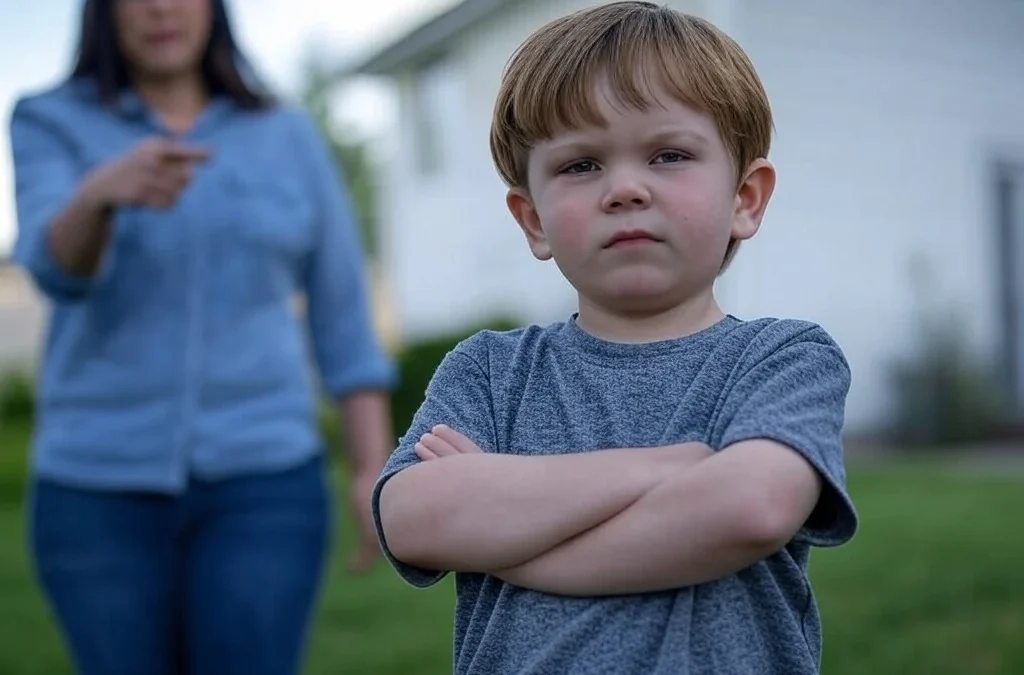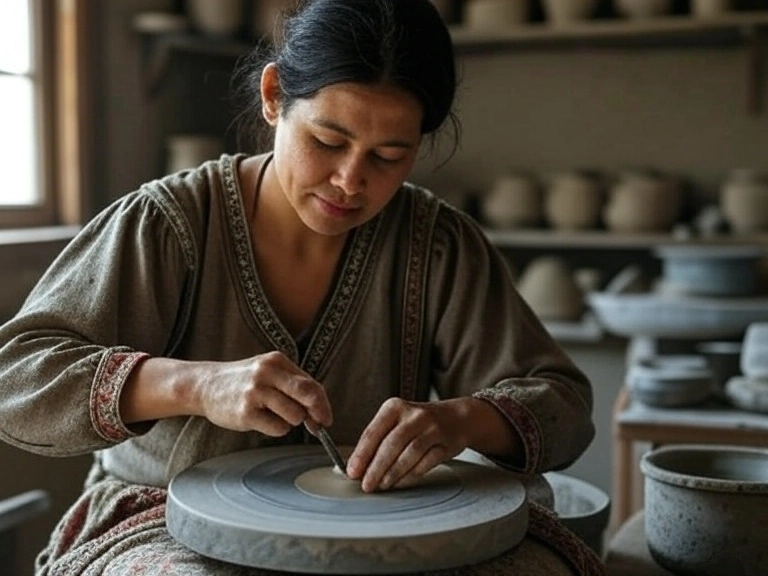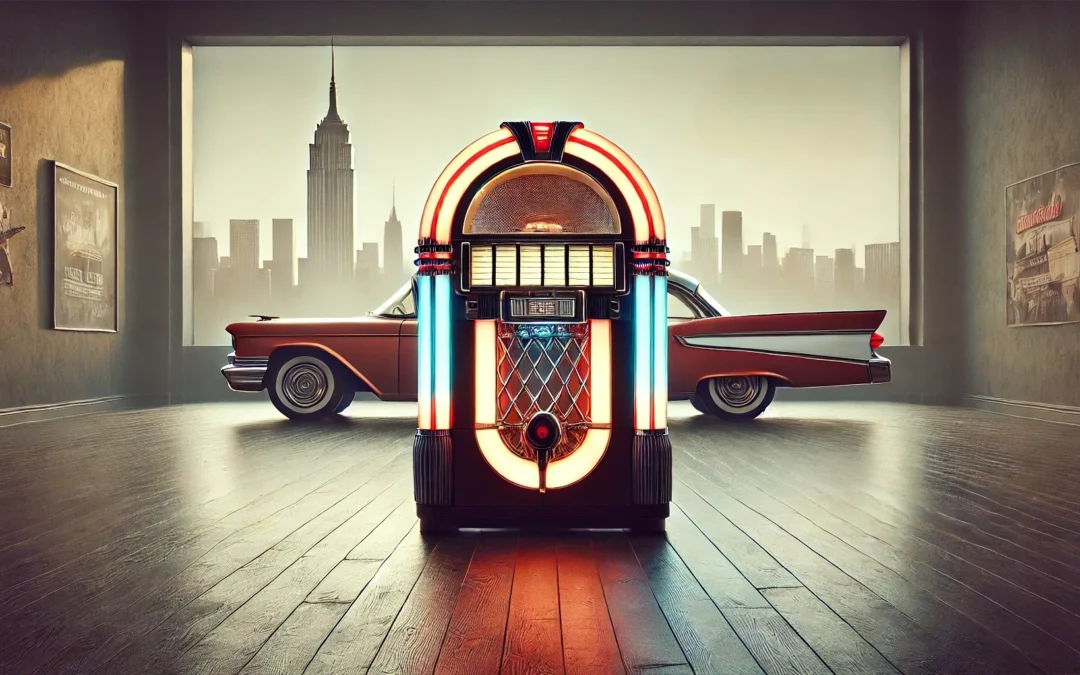Pop culture is a big part of everyday life, shaping the way we think, talk, and even dress. Imagine sitting in a coffee shop and overhearing a conversation about the latest superhero movie or the newest hit song on the charts. These are just everyday examples of how deeply pop culture influences us. From blockbuster films to viral internet memes, American pop culture reaches people of all ages and backgrounds, creating shared experiences and conversations.
Over the years, American pop culture has become a global phenomenon, spreading trends and ideas far beyond its borders. Think about how many people around the world watch American TV shows or follow American celebrities on social media. This widespread influence shows how American pop culture not only reflects what’s happening in society but also shapes it. In this article, we’ll explore 20 examples of American pop culture that have left a mark on our society, from classic TV shows to the latest fashion trends. Whether you’re a fan or just curious, these examples will give you a glimpse into what makes American pop culture so impactful.
What is American Pop Culture?
American Pop Culture is the collection of popular trends, ideas, images, and symbols that shape mainstream life in the United States. This cultural mix includes music, movies, television, fashion, sports, technology, and language that capture the values, beliefs, and everyday interests of American society. Known for its rapid evolution, American pop culture adapts to social shifts, reflecting the unique spirit and diversity of the U.S. Through powerful channels like film, social media, and advertising, these trends reach audiences worldwide, influencing global lifestyles and entertainment. From Hollywood icons and chart-topping songs to viral social media trends and iconic fashion, American pop culture not only mirrors U.S. society but also impacts the global cultural landscape, creating shared experiences across borders.
The Best Examples of American Pop Culture
Explore the most iconic examples of American pop culture that continue to shape and inspire people around the world. From Hollywood movies to music hits topping the Billboard charts, these cultural staples reveal the unique spirit of American creativity, entertainment, and influence.
1. Hollywood Movies
Hollywood is the heart of the global film industry and has had a significant influence on American pop culture. Iconic movies like “Star Wars,” “The Godfather,” and “Jurassic Park” have not only entertained audiences but also shaped the way stories are told around the world. The characters and narratives from these films often become part of the cultural fabric, influencing fashion, language, and even people’s dreams.
2. Fast Food Chains
Fast food is synonymous with American culture. Chains like McDonald’s, Burger King, and Taco Bell are known worldwide and represent the fast-paced lifestyle often associated with America. These establishments offer quick, affordable meals and have become a staple in society, influencing dietary habits and even social gatherings.
3. Super Bowl
The Super Bowl is more than just a football game; it’s a major cultural event. Each year, millions of Americans gather to watch not just the game, but also the halftime show and commercials, which have become as anticipated as the event itself. This spectacle showcases American sportsmanship, entertainment, and the power of advertising.
4. Comic Books and Superheroes
American comic books have given birth to iconic superheroes like Superman, Batman, and Spider-Man. These characters have become modern myths, representing ideals like justice and courage. Comic books have transitioned from print to screen, with superhero movies becoming blockbusters that captivate audiences globally.
5. Music and the Billboard Charts
The U.S. music scene, especially the Billboard charts, plays a critical role in pop culture. From Elvis Presley to Beyoncé, American artists have set trends in music genres such as rock, hip-hop, and pop. These artists and their songs often reflect societal changes and influence personal identities.
6. Reality TV Shows
Reality TV shows like “Survivor,” “The Bachelor,” and “Keeping Up with the Kardashians” have become staples of American television. These shows offer viewers a glimpse into different lifestyles and personalities, often sparking conversations about fame, relationships, and societal values.
7. Social Media Platforms
Platforms like Facebook, Twitter, and Instagram originated in America and have transformed how people interact and share information. These social media giants have not only changed communication but also played a role in shaping trends, influencing public opinion, and creating internet celebrities.
8. American Fashion Icons
American fashion has left an indelible mark on global style. Icons like Marilyn Monroe, James Dean, and more recently, Rihanna and Kanye West, have set trends that continue to influence fashion worldwide. Their unique styles encapsulate the spirit of innovation and individuality.
9. Disney and Animation
Disney has been a pillar of American pop culture since the early 20th century. Animated classics like “The Lion King” and “Frozen” are cherished by children and adults alike. Disney’s storytelling and iconic characters have become a significant part of childhood memories and family traditions.
10. Jazz Music
Jazz emerged from African American communities in the early 20th century, blending blues, ragtime, and improvisational styles. Legends like Louis Armstrong and Miles Davis shaped the genre, bringing spontaneous creativity and emotional expression to music. Jazz has become a defining part of American culture and a genre beloved worldwide.
11. The Fourth of July Celebrations
Every Independence Day, Americans gather to celebrate freedom with fireworks, barbecues, and parades. This tradition of honoring independence is a quintessential part of American identity. The festivities reflect patriotism and community spirit, making the Fourth of July a meaningful cultural touchstone.
12. Drive-In Theaters
Drive-in theaters became popular in the 1950s, offering a new, communal way to experience movies from the comfort of a car. Though their numbers have dwindled, drive-ins symbolize a nostalgic slice of American culture, cherished for their unique blend of social gathering and film-watching under the stars.
13. The Road Trip
America’s vast landscapes have inspired the classic road trip, an adventure immortalized in films, books, and songs. The freedom of the open road, stopping at diners, and roadside attractions embody the American spirit of exploration and spontaneity. The road trip remains an emblem of freedom and discovery.
14. Jazzercise and Fitness Craze
The 1980s brought a fitness boom, with jazzercise and aerobics leading the way. Brightly colored leotards, energetic routines, and celebrity instructors like Jane Fonda made fitness fashionable. This movement highlighted health consciousness and community, becoming a cultural phenomenon that inspired today’s fitness culture.
15. Late-Night Talk Shows
American late-night shows like “The Tonight Show” and “Saturday Night Live” have shaped comedy and satire. With celebrity interviews, musical guests, and political skits, these shows offer a mix of entertainment and social commentary. They’re a staple of American TV culture, capturing current events with humor and wit.
16. Halloween Celebrations
Halloween has grown into a massive celebration in the U.S., with costumes, haunted houses, and trick-or-treating becoming annual traditions. It’s a holiday where creativity flourishes, and communities come together for spooky fun. This American version of Halloween has influenced similar celebrations around the world.
17. Sneakers and Sneaker Culture
Sneaker culture has deep roots in American fashion, merging sports with street style. Brands like Nike and Adidas, along with iconic sneakers like Air Jordans, represent more than footwear—they embody status, identity, and self-expression. Sneakers have become a cultural statement, with dedicated collectors and exclusive drops.
18. NASA and Space Exploration
NASA’s achievements, from landing on the moon to exploring Mars, have made space exploration a proud part of American identity. The Space Race ignited a fascination with science and technology, inspiring generations to dream big. NASA’s accomplishments continue to capture imaginations and symbolize American innovation.
19. American Diner Culture
Classic diners, with their neon signs and chrome interiors, are icons of American pop culture. These 24-hour eateries are known for hearty breakfasts, milkshakes, and burgers, symbolizing comfort and community. Diners remain beloved for their nostalgic charm and are often seen as a welcoming space for all.
20. Stand-up Comedy
Stand-up comedy is a unique American art form that has gained popularity around the world. Comedians like Richard Pryor, George Carlin, and Dave Chappelle use humor to comment on society, politics, and human nature. Their performances not only entertain but also provoke thought and discussion on important issues.
Additional Examples of American Pop Culture
Rock ‘n’ Roll Music – Emerging in the 1950s, rock ‘n’ roll transformed the music scene with its energetic rhythms and rebellious spirit. Artists like Elvis Presley and Chuck Berry revolutionized music and youth culture, promoting themes of freedom and individuality. This genre laid the foundation for numerous music styles that followed, cementing its legacy in American pop culture.
Television Sitcoms – American sitcoms, such as “Friends” and “The Office,” have charmed viewers with their humor and relatable characters. These shows often reflect societal norms and issues, providing both entertainment and a mirror to American life. The sitcom format has been replicated globally, attesting to its widespread influence.
Social Media Platforms – American-founded social media platforms like Facebook, Twitter, and Instagram have revolutionized communication and self-expression. These platforms allow users to share their lives and opinions instantly, connecting people across vast distances. Social media has become a significant part of modern life, affecting everything from personal relationships to politics.
Hip-Hop Culture – Originating in the Bronx in the 1970s, hip-hop has grown into a global cultural movement. With its roots in music, dance, and art, hip-hop expresses themes of struggle, resilience, and identity. Artists like Tupac Shakur and Jay-Z have used their music to address social issues, making hip-hop a powerful voice in American society.
American Football – As one of the most popular sports in the United States, American football is more than just a game; it’s a cultural event. The Super Bowl, in particular, is an annual spectacle watched by millions, featuring elaborate halftime shows and high-profile commercials. Football embodies values of teamwork and perseverance, resonating with American audiences.
Broadway Musicals – Broadway in New York City is synonymous with world-class theater and musicals. Productions like “The Phantom of the Opera” and “Hamilton” have thrilled audiences with their storytelling, music, and performances. Broadway serves as a hub for creativity and innovation in theater, influencing productions worldwide.
Streetwear Fashion – Reflecting urban culture and individuality, American streetwear has gained global popularity. Brands like Supreme and Off-White blend fashion with cultural commentary, appealing to younger generations. Streetwear’s influence can be seen in mainstream fashion, representing the intersection of style, music, and art.
Characteristics of American Pop Culture
American pop culture is a unique blend of ideas, freedom, and bold expression. One key characteristic is its adaptability. American culture constantly evolves, often absorbing influences from various communities and backgrounds. This diversity creates a rich, varied landscape where new ideas can thrive. The openness to innovation is part of what makes American culture so compelling—there’s a willingness to experiment, challenge norms, and push boundaries.
Another defining trait is the nation’s strong individualism. This focus on personal identity and freedom is central to American ideals. It’s reflected in everything from music and fashion to social media, where self-expression is celebrated. In pop culture, individual voices and stories are amplified, giving everyone a chance to connect or find representation. This focus on individuality resonates with people worldwide, who see in it an invitation to embrace their own unique selves.
Consumerism also plays a big role. America’s influence in entertainment and media industries has allowed it to export its culture globally. Hollywood movies, fast-food chains, and brands like Apple and Nike are recognized worldwide. But American culture is more than just big names; it’s a spirit of accessibility. American products and media aim to be relatable, often using universal themes of love, adventure, and self-discovery. This approach helps American pop culture bridge cultural differences and reach audiences everywhere.
American culture is also known for its boldness. There’s a sense of fearlessness in tackling sensitive issues or exploring controversial themes. Stand-up comedians, musicians, and filmmakers often address topics like politics, identity, and social justice. This openness to discussing tough subjects has given American pop culture a reputation for both authenticity and rawness.
Finally, technology has cemented American pop culture’s global reach. From the earliest days of Hollywood to today’s social media platforms, American culture has thrived on new technology. Platforms like Instagram, Netflix, and YouTube bring American music, shows, and trends directly to people worldwide. This seamless access has made American pop culture a central part of the global conversation, influencing tastes, trends, and even values across borders.
In essence, American pop culture is not just popular because America is powerful. Its success comes from a blend of openness, innovation, and relatability that appeals to human curiosity and individual identity. These qualities make American culture feel both accessible and inspiring, drawing in audiences across the globe.
The Impact of Television on American Pop Culture
Television has played a pivotal role in shaping American pop culture since its rise in the mid-20th century. As a medium, it has not only reflected societal values but also influenced them. In the 1950s, shows like “I Love Lucy” became household staples, introducing new social norms and breaking traditional barriers. The sitcom format, established during this era, continues to dominate television programming today.
In the 1980s and 1990s, television expanded its influence with the advent of cable networks such as MTV, which revolutionized the music industry by introducing music videos as a form of entertainment. This period also saw the birth of iconic TV shows like “The Simpsons” and “Friends,” which have had lasting impacts on language, fashion, and even lifestyle choices. As audiences moved into the new millennium, reality TV emerged as a powerful genre, with shows like “Survivor” and “American Idol” captivating millions and altering viewers’ perceptions of fame and success.
The digital age has further transformed television’s role in pop culture. Streaming services like Netflix and Hulu have changed the way content is consumed, allowing for binge-watching and personalized viewing experiences. This shift has led to a new era of “peak TV,” where diverse stories and voices are more accessible than ever before. The ability of television to adapt and evolve makes it a crucial element in understanding American pop culture’s past, present, and future.
Music and Its Influence on American Pop Culture
Music is a cornerstone of American pop culture, reflecting and shaping societal trends and attitudes. From the birth of jazz in the early 20th century to the rise of hip-hop in the 1980s, music has been a driving force in cultural expression and identity. Each genre, from rock and roll to country, has brought its unique flavor to the cultural landscape, influencing everything from fashion to political movements.
The 1960s were a particularly transformative decade for music, with artists like The Beatles and Bob Dylan pushing boundaries and addressing social issues through their lyrics. This era also saw the emergence of music festivals such as Woodstock, which became symbols of counterculture and youth rebellion. In the decades that followed, music continued to mirror societal changes, with the rise of punk in the 1970s and the grunge movement in the 1990s challenging norms and inspiring new forms of creativity.
Technology has significantly impacted the music industry and its cultural influence. The introduction of the internet and digital platforms like iTunes and Spotify has democratized music distribution, allowing independent artists to reach global audiences without traditional record label support. This shift has led to a more diverse musical landscape, where niche genres can thrive alongside mainstream hits. As music continues to evolve, it remains a powerful medium for cultural expression and a key element of American pop culture.
The Influence of American Pop Culture on Global Fashion Trends
American pop culture has long been a trendsetter in the world of fashion. From Hollywood’s red carpets to the bustling streets of New York City, style icons emerge and set the tone for what people wear around the world. The influence of American music artists and actors cannot be overstated. Musicians like Beyoncé and Kanye West have been pivotal in shaping streetwear and luxury fashion. Their unique styles resonate with fans globally, leading to widespread imitation and adaptation.
Television and movies also play a crucial role. Shows like “Friends” and “Sex and the City” have made certain looks iconic, with fans emulating their favorite characters’ wardrobes. Brands often collaborate with celebrities to launch exclusive collections, blurring the lines between entertainment and fashion. This symbiotic relationship ensures that American pop culture continues to be a major player in global fashion.
The internet has only accelerated this influence. Social media platforms like Instagram and TikTok showcase American styles to a worldwide audience, making trends viral overnight. It’s fascinating how fast a fashion statement can travel from a Los Angeles boutique to a Tokyo street. This digital age of fashion makes it harder to predict what will stick, but the impact of American pop culture remains undeniable.
American Pop Culture and Its Impact on Language
American pop culture significantly impacts language, introducing new words and phrases that quickly become part of everyday speech. Slang from movies, TV shows, and songs often finds its way into global conversations. Terms like “selfie,” “ghosting,” and “binge-watching” began in the U.S. but are now common in many languages.
The constant evolution of language reflects society’s changes. TV shows like “The Simpsons” and “Friends” have contributed numerous catchphrases that people use worldwide. These terms often capture the essence of a generation’s humor and experiences, making them relatable across different cultures.
Social media has further amplified this effect. Platforms like Twitter and TikTok allow for instant sharing, causing jargon and memes to spread rapidly. This phenomenon blurs geographical boundaries, creating a shared cultural vocabulary. It’s like a linguistic experiment happening in real time.
However, not everyone is a fan of this trend. Some argue that the widespread adoption of American slang can erode local languages and traditions. While this concern is valid, it also highlights the dynamic nature of language. As long as American pop culture continues to innovate and entertain, its influence on language will likely persist.
The Most Popular on BitGlint

Top 100 Personal Items List
Everyone uses personal items in their daily lives, often without even thinking about them. From the moment you wake up...

30 Defiance Examples & Meaning
Defiance is something most people experience at some point in life. You feel it when you say no to something that...

Top 30 Desire Examples & Definition
Desire is a powerful force that drives much of human behavior, shaping our goals, dreams, and everyday decisions. It's...

100 Non-Digital Things List
In everyday life, there are still hundreds of objects, tools, and materials that exist completely outside the digital...

30 Examples of Attention & Definition
Have you ever noticed how a catchy tune can grab your attention, even when you're busy doing something else? It's...

60 Cultural Traditions Examples & Definition
Cultural traditions are part of daily life - whether people realize it or not. They shape what we eat, how we...

Top 30 Intimacy Examples & Meaning
Intimacy goes beyond physical touch or romantic moments. It’s about closeness, trust, and connection. In everyday...
Get Inspired with BitGlint
The Latest
40 Emotional Value Examples & Meaning
Why do some messages stick — while others are forgotten? Why do people choose one brand over another, even when the product is the same? The answer often comes down to emotional value. Emotional value is what makes a message feel human. It’s the emotional connection...

30 Teasing Examples & Definition
Teasing is a common part of human interaction. People tease in different ways, for different reasons. Sometimes it is friendly. Sometimes it can hurt feelings. Understanding what teasing means and seeing clear examples helps everyone handle these moments better....
40 Thought Experiments for Curious Minds
Some questions can’t be answered with a simple yes or no. Some problems don’t have a clear solution. That’s where thought experiments come in. They aren’t just old ideas from philosophy books. Thought experiments are tools we still use to think through problems, test...
Dogma: 30 Examples and Definition
Imagine you're at a family dinner, and someone brings up a topic that sparks a lively debate. Everyone has different opinions, but there's one person who insists their view is the absolute truth, with no room for discussion. This is a common scenario where dogma often...

